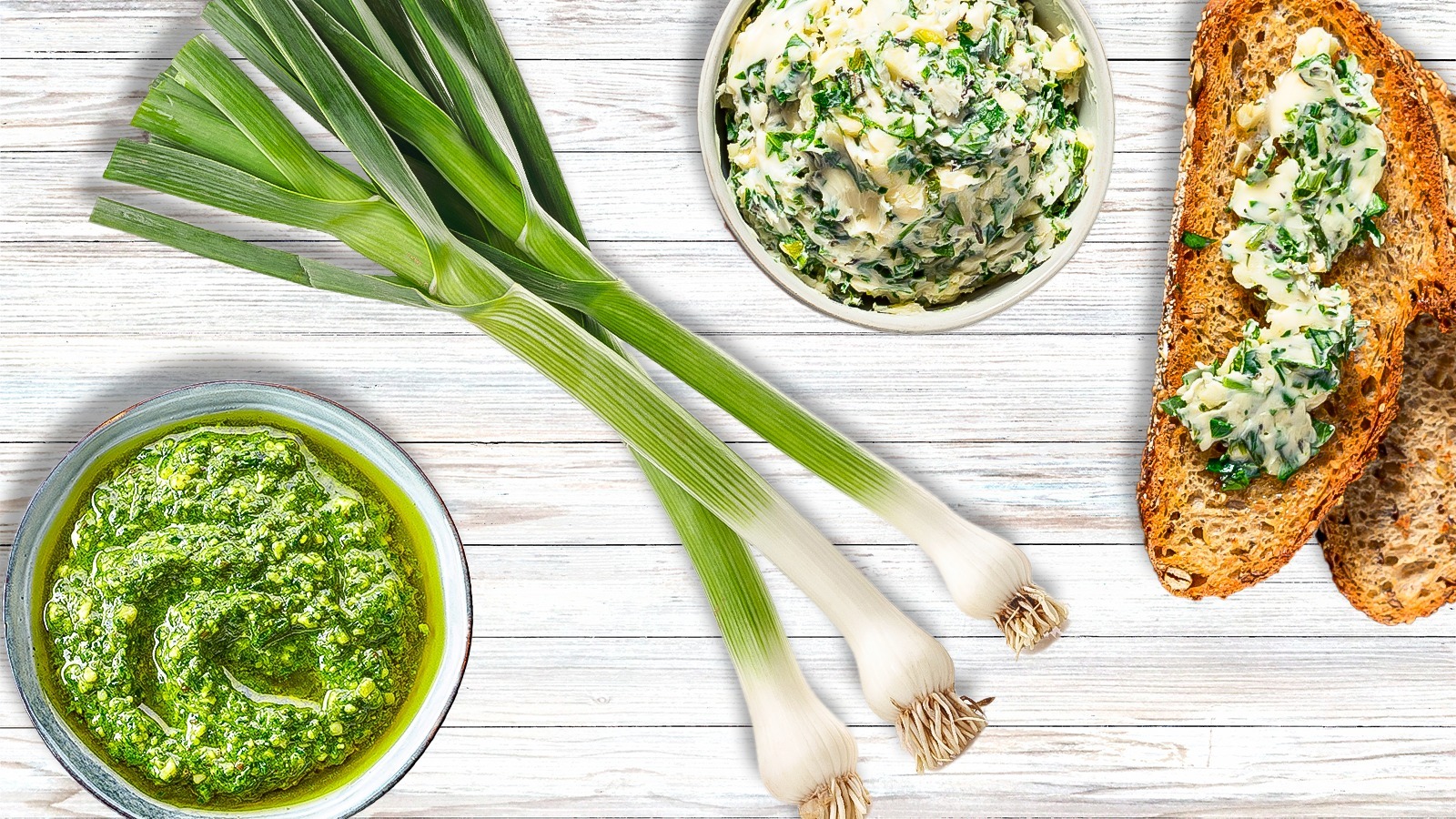Garlic is one of the most popular — and oldest — ingredients in global cuisine. People have been cultivating and cooking with garlic for around 5,000 years, and it shows no sign of falling out of fashion. Its rich history as a cooking ingredient is matched by its history as a natural medicine. It is a common sentiment, in fact, that there is no such thing as too much garlic, and our kitchens reflect the truth in that. Whether in bulbs on the counter or dried and pulverized into garlic powder, it is rarely far out of reach for cooks. But there is one variation of garlic that you may be underutilizing: green garlic.
While you may have seen green garlic before, it’s probably not what you think of when you imagine garlic. Green garlic, also known as spring garlic or young garlic, doesn’t resemble mature garlic in appearance. Its green leaves and long stem don’t appear similar to mature garlic, which has papery skin and clove-filled bulbs. But in fact, they are the same plant, and green garlic can be the same kitchen workhorse. The young garlic plant carries the same distinct flavor and aroma as mature garlic but has a fresher, sweeter, and milder taste that adds a new dimension to your favorite garlicky dishes. A farmer’s market favorite and a staple ingredient of many Asian cuisines, green garlic is one more way to bring garlic’s magic to your cooking.
What is green garlic?
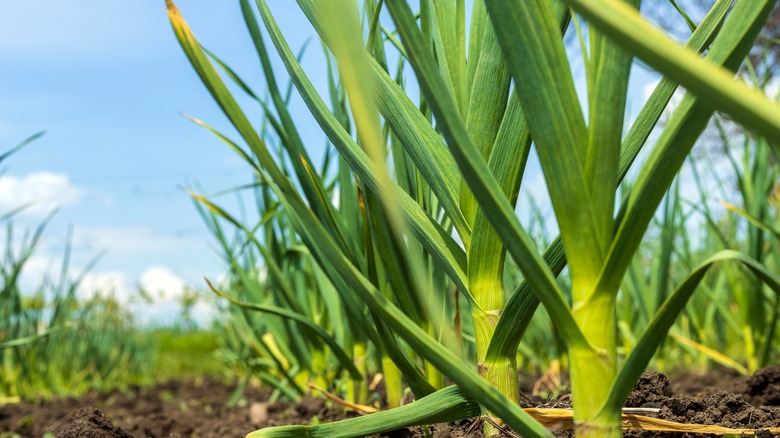
Green garlic is the same familiar allium that you buy in bulbs at the grocery store — the big difference is just a matter of timing. Green garlic is simply a garlic plant that was harvested while still immature before it fully developed its bulb. It is kept whole, so both the small bulb and the green shoots of the plant are intact. Their appearance is like a cross between a leek and a scallion: the leaves are flat, like a leek, but the size and shape of the plant are closer to a scallion.
Green garlic has always been a byproduct of garlic production. Farmers remove many of the still-immature plants from the ground in the early spring to avoid overcrowding as the bulbs begin to grow. In the past, these plants may have been turned into compost for the remaining plants. However, increased interest in local, lesser-known agricultural delicacies has made green garlic a popular farmer’s market find.
What does green garlic taste like?
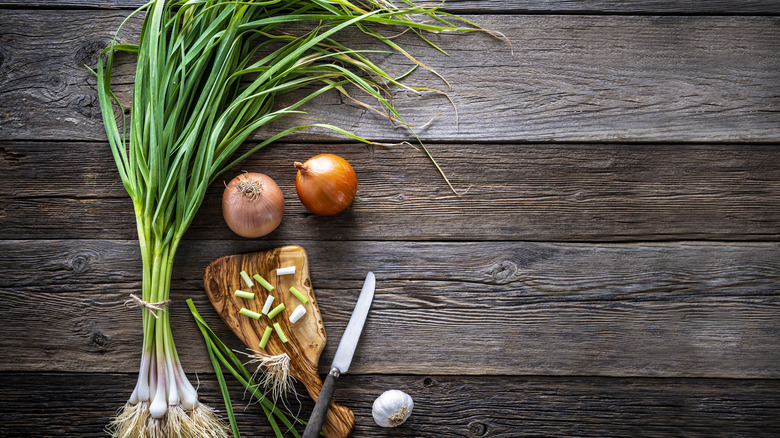
Garlic is an allium vegetable, alongside fellow recipe powerhouses like shallots, onion, chives, leeks, and scallions. Alliums are key ingredients in cooking all around the world, and all you need to understand why is to smell it cooking up in a pan. Pungent with a bracing bite when raw, garlic cooks down into a buttery, savory element with an incredible aroma. The flavors added and enhanced by garlic are enumerable, and it works well in almost all conceivable savory applications.
It probably comes as no surprise that green garlic tastes, well, garlicky. But it lacks the strong, almost spicy element of mature garlic. It is less harsh and has a lighter bite. Because it is a young, fresh plant, it has a more vegetal, bright, earthy flavor. Like garlic scapes or scallions, its flavor is delicate enough to work in raw preparation forms. Its flavor mellows significantly when cooked, as is true of mature garlic.
Where to find green garlic
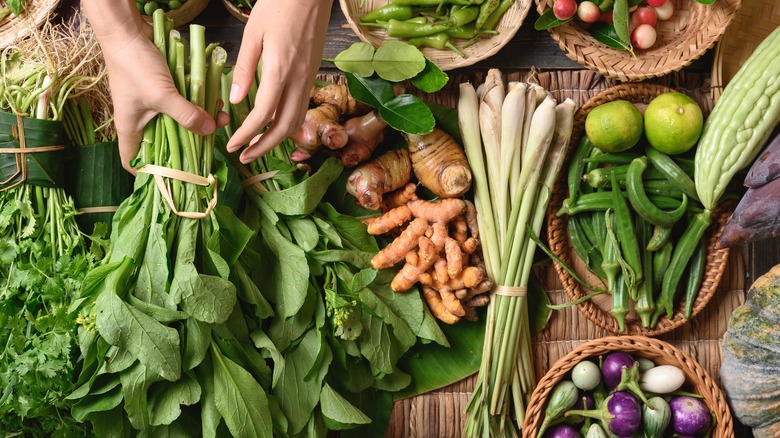
Green garlic has historically been a neglected byproduct of mature garlic harvesting in North American cooking. For that reason, it is largely only available when shopping in some farmers’ markets. That is still the best bet for finding the spring allium, especially when many farmers’ markets first appear again after the winter. That being said, some high-end grocery stores or local product-focused markets will carry green garlic.
Another place to look for green garlic is your local Asian or Chinese grocery store. Because green garlic is a much more common ingredient in East and Southeast Asian cooking, it’s much easier to find in markets focused on ingredients in Chinese, Thai, Vietnamese, and Indian cuisines.
You can also really get hands-on and grow green garlic yourself. Plant small garlic cloves in the fall and harvest the plants in early spring, when they are somewhere around 10-15 inches tall. Remember, though — that wherever or however you find your green garlic, it’s a spring crop, so you won’t have much luck finding it during any other season.
Green garlic vs. garlic scapes
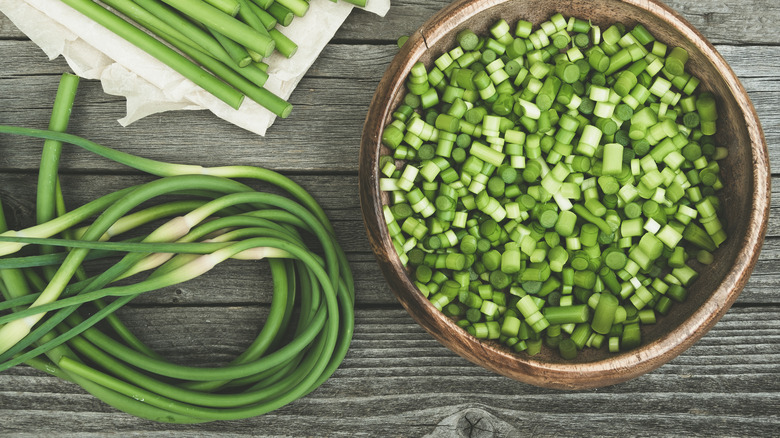
AMV_80/Shutterstock
People often confuse green garlic and garlic scapes as they share some striking similarities. They both feature long, vibrant green stalks with a lighter and brighter garlic flavor. They are also both spring byproducts of garlic cultivation. However, there are key differences between the two.
Green garlic looks similar to scallions or small leeks. Garlic scapes have a distinctive, curly stalk that ends in a pale green, spade-shaped bud. Green garlic is an undeveloped garlic plant, so it is comprised of its long, young stalk and bulb. If left in the soil, it would continue to grow until it eventually became a full garlic bulb. Garlic scapes, on the other hand, are the flowering stalks of hardneck garlic plants. If left growing on the plant, scapes will flower at their buds and create new garlic plants; if harvested in early spring, they are a delicious garlic product all their own.
Unsurprisingly, the flavor profiles of garlic scapes and green garlic are similar; they both have a fresh, garlicky flavor. However, while the flavor profile of green garlic remains in the world of allium varieties, garlic scapes have notes similar to those of other familiar garden vegetables. They have a sweeter vegetal taste, like peas or asparagus, that green garlic does not share.
How to use green garlic
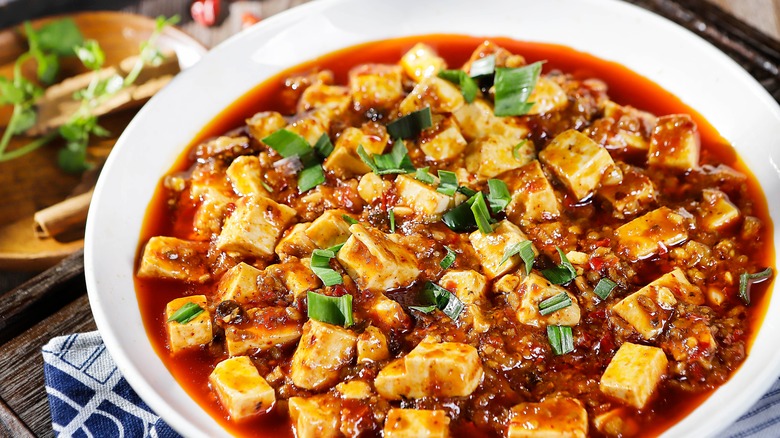
Green garlic is often likened to scallions and chives, and for good reason. Green garlic has a bright flavor that delivers a bracing bite while still being mild enough to use raw. It’s versatile, so you can use this garlic variation for anything from the base flavor of your dish to a punchy garnish. Swap it for scallions in any recipe to get a good feel for how you like it and how it differs from its garlicky siblings. It works well in salads, incorporated in a compound butter, or sauteed. It can top a pizza or get blitzed into pesto. Its fresh and springy twist on typical garlic flavors makes it a well-loved ingredient. For example, Alice Waters, the founder of Chez Panisse and icon of farm-to-table cooking, swears by using green garlic in her potato soup.
As a staple aromatic component in Eastern cooking, it works perfectly in place of scallions, chives, or leeks in many South and East Asian recipes (in fact, often, recipes that call for these are simply replacing the more traditional green garlic for American audiences). It’s perfect in a classic dish like mapo tofu or many sizzling stir-fries.
How to store green garlic
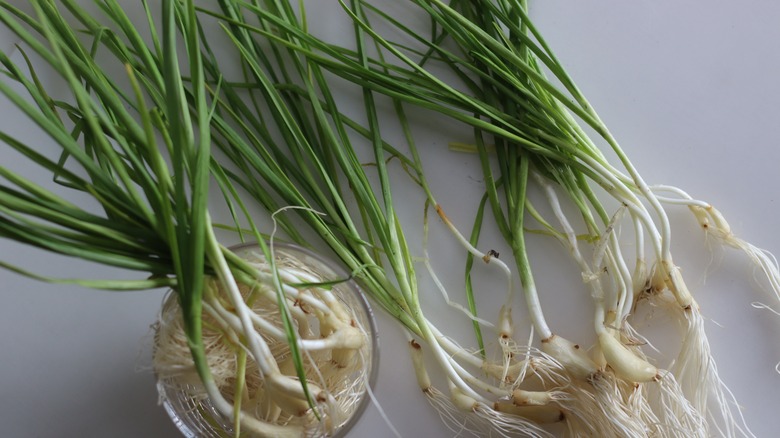
Mature garlic is dried, so the best way to store it is by putting it in a shady spot on your kitchen counter or in the pantry. It can last months and months if stored properly. Green garlic, on the other hand, requires a little more TLC to keep it fresh, and the timeline for when to use it is much shorter.
Young garlic stalks are delicate and will wilt and grow soggy over time, much like scallions. They should be stored in the refrigerator in order to keep them fresh for as long as possible. First, wash and dry your green onions, removing any browning or wilted stalks. Keep them in the crisper drawer in a loose bag with a damp paper towel; they will last you at least a week.
Another option is to use one of the most popular methods for keeping scallions fresh: store them in a jar with a bit of water. The water should only be high enough to cover the roots of the garlic, allowing the stalks to continue to grow as you use them.
Nutritional and health benefits of garlic
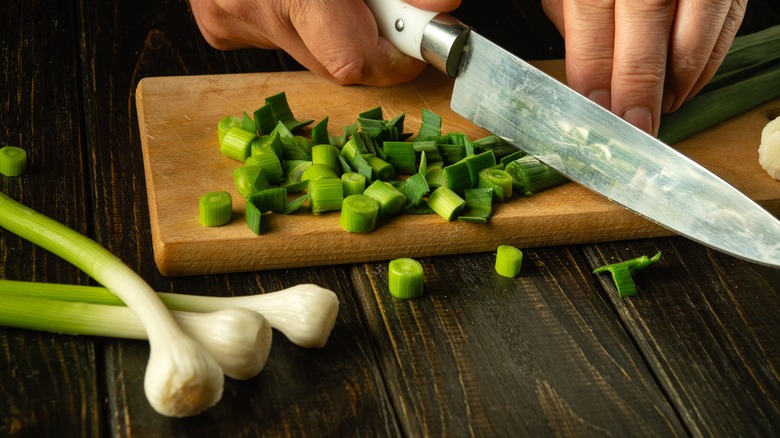
For as long as garlic has been cultivated and consumed, it has been used for its medicinal properties. Since the days of Aristotle, garlic has been used to treat various ailments. Ancient Greek Olympians used it as a performance enhancer, and it was used to aid respiration in Ancient China. It is still used in traditional Chinese medicine and other natural health regimens due to its potency and effectiveness. Green garlic shares the same makeup as mature garlic, so it is packed with the same good stuff: antioxidants, vitamin C, and magnesium.
While it is not known precisely what aspect of garlic’s makeup is responsible, there are proven reasons you should be eating more garlic. Studies show that it combats bad cholesterol. Studies also suggest that it can help lower blood pressure, and the antioxidants within garlic may help prevent dementia and otherwise improve longevity.
Because the compounds present within garlic are degraded by heat, aka cooking, it is generally advised to eat garlic raw to receive any health benefits. With green garlic, this is much easier (and tastier), as mature garlic is notoriously strong and pungent when raw.



